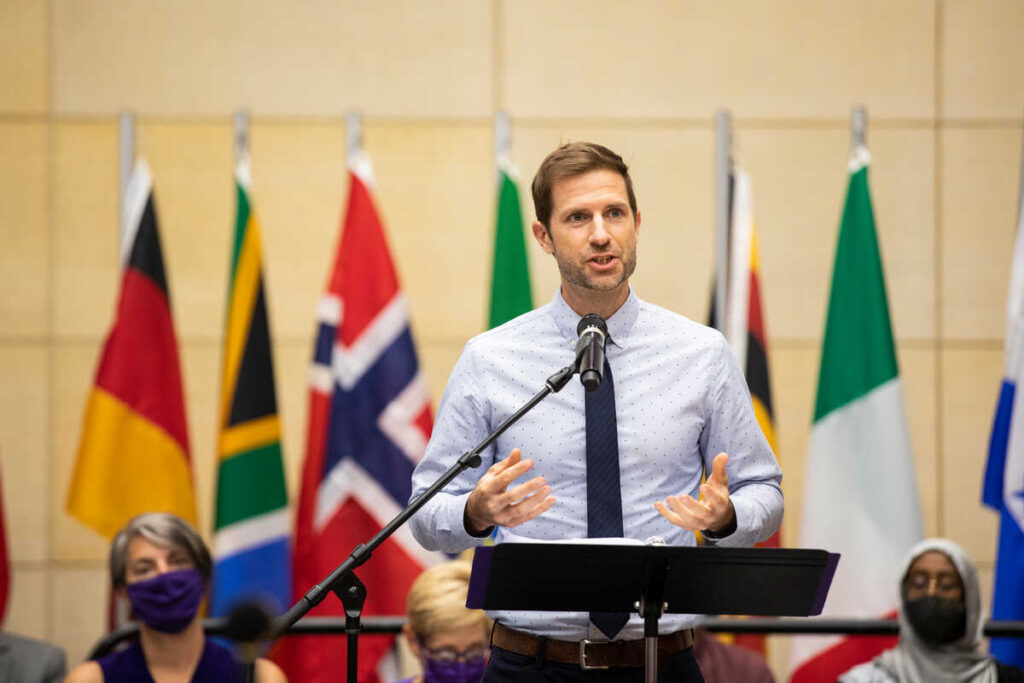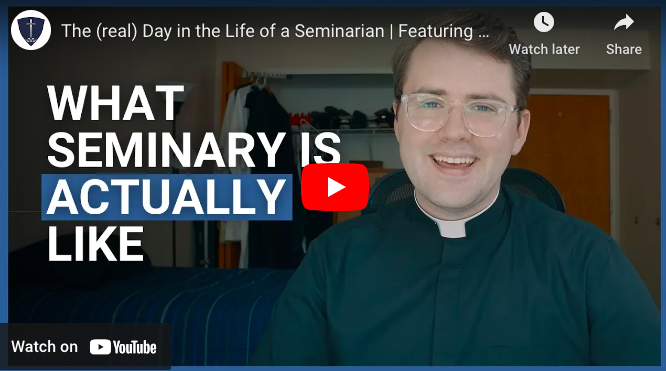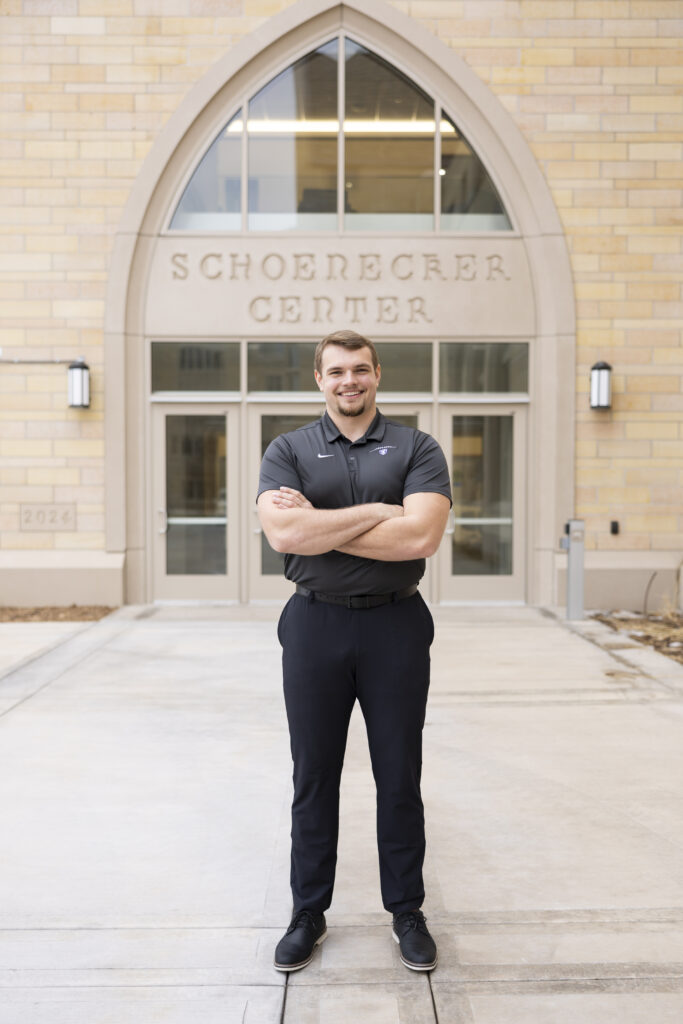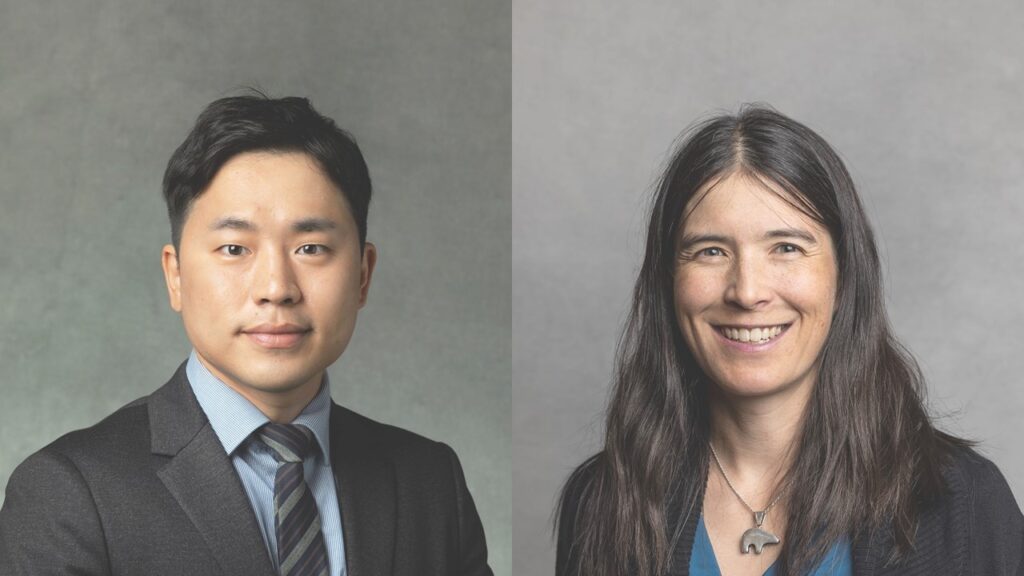Every priest has a vocation as unique as the cup he uses to consecrate the Blood of Christ
When Barbara Kratt was growing up in the Twin Cities, she and her family’s favorite pastor was Father Francis Pouliot. The late priest spent his final years at the Leo C. Byrne Residence for retired clergymen adjacent to The Saint Paul Seminary.
So after Kratt’s son Wil entered the seminary, he figured it’d be convenient to go over and introduce himself to the priest of whom his mom had spoken so glowingly.
The old shepherd and the young discerner became fast friends. During one of Wil’s visits to the Byrne Residence, Pouliot told him, “Come back in a week. I have something for you.”
Seven days later, Pouliot handed Kratt a box. Inside was a simple-but-beautiful chalice. Light gold, almost silver, on the outside. A deep golden hue on the inside. The amethyst on the base represented the month of February – the month Kratt was born and Pouliot was ordained.
“He said that it was actually his first chalice ever,” said Kratt, who’s now Father Wil Kratt after being ordained on May 27, “which I wasn’t expecting. He was just very casual about it, of course trying not to make a big deal of it – just a very humble man.
“It is probably the most simple chalice out of all my classmates, but definitely one of the most significant ones that I could possibly think of. … It was very special and very significant coming from a man who has inspired many vocations and had a large impact, had a long priesthood.”
Pouliot died in April 2022. He was 89.
Most parish priests have their own, personal chalice. Some of them use it to celebrate Mass daily. Others save it for special occasions – important feast days, their ordination anniversary, the wedding or funeral of a family member.
Each chalice has a story. So does each priest who uses it to consecrate wine into Jesus’ Precious Blood.
FATHER John Rumpza, Archdiocese of St. Paul and MinneapolisWhat’s in the chalice is love itself, is mercy itself, is the wonder who is God Himself given for us, given to us. I’m just overwhelmed that through these hands in this chalice, the Lord of the universe will be made present.
Father Kyle Etzel’s chalice is packed with familial meaning. It includes an image of St. Elizabeth of Hungary, a popular patroness throughout Europe. One side of Etzel’s family is German, the other Central European; the chalice design itself is meant to replicate what was used during Masses in medieval Germany.
“There are just [so many] of those family connections,” said Etzel, whose parents gave him the chalice as a gift leading up to his ordination for the Archdiocese of Saint Paul and Minneapolis. “That was what drew me to it.
“Also, it’s beautiful, and I think the Lord deserves beautiful things.”
Indeed, the Church teaches that what takes place each Mass is much more than just a fancy show. The transubstantiation of bread and wine into Christ’s Body and Blood is unfathomably more profound than even the most ornate of Eucharistic vessels.
“You can tell when the priest loves Jesus because of the way that he holds Jesus in the Eucharist,” said Deacon Jacob Toma of the Diocese of Duluth, Minnesota. “A priest who celebrates the Mass with piety, with humble and simple devotion, is something that not only has inspired my vocation but ultimately is the thing that’s kept the Church going for all these years.”
Like Etzel, Toma received his chalice from his parents. It also has the date of his ordination – June 23, 2023.
Photos: The 2023 priestly ordination class at The Saint Paul Seminary and their chalices
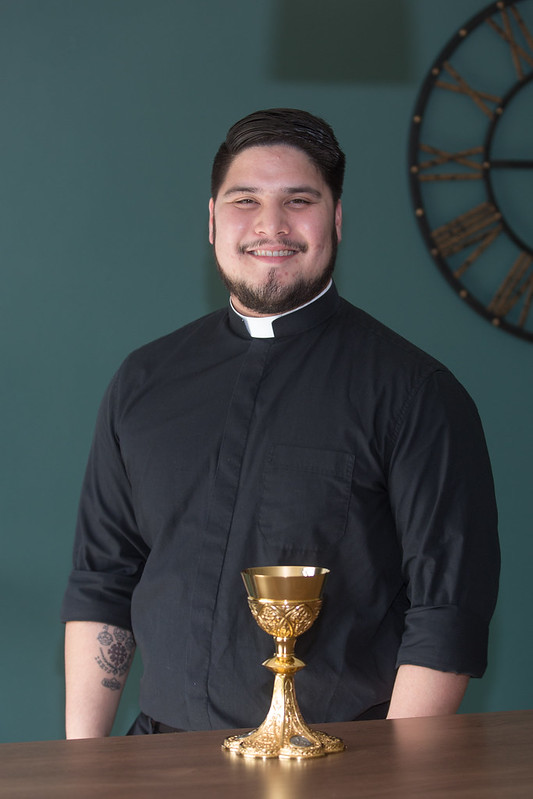

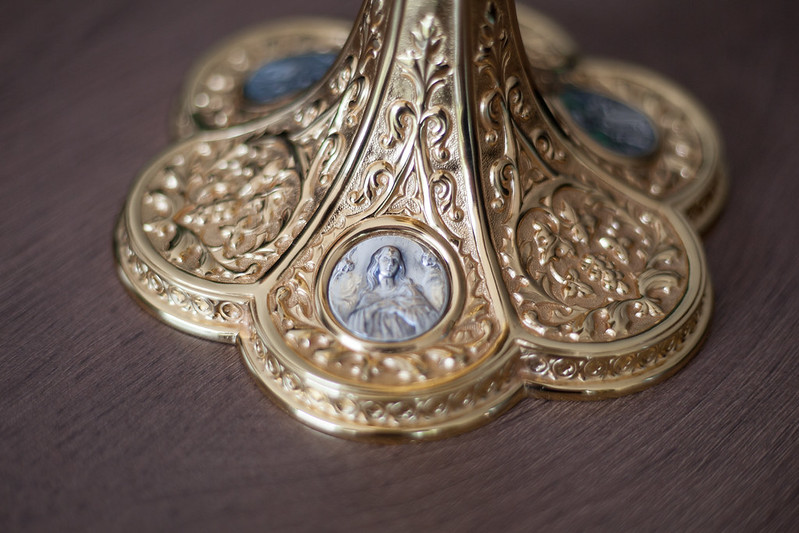
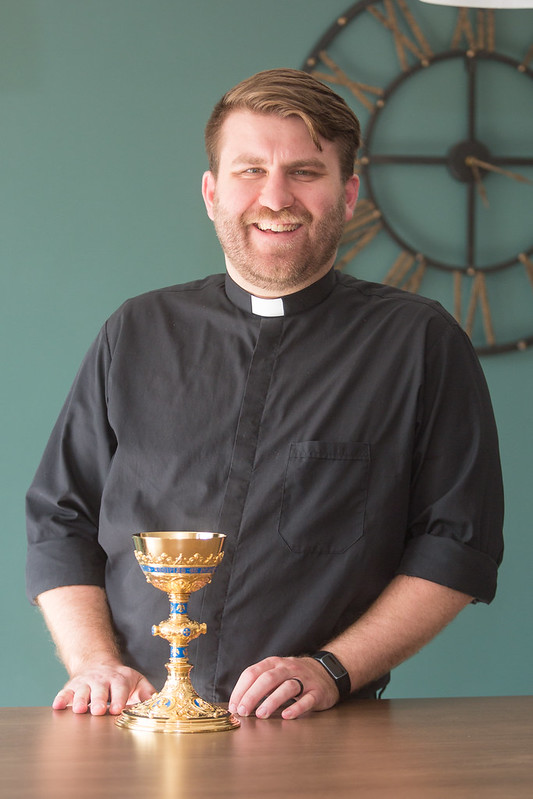
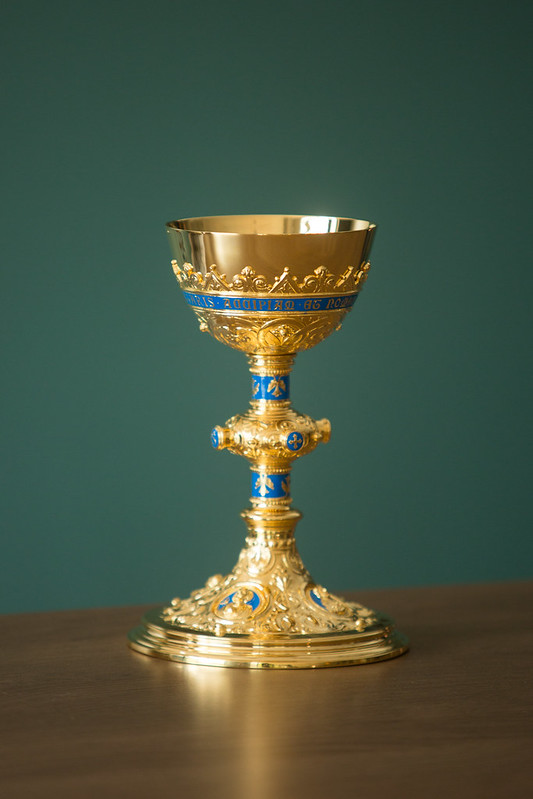
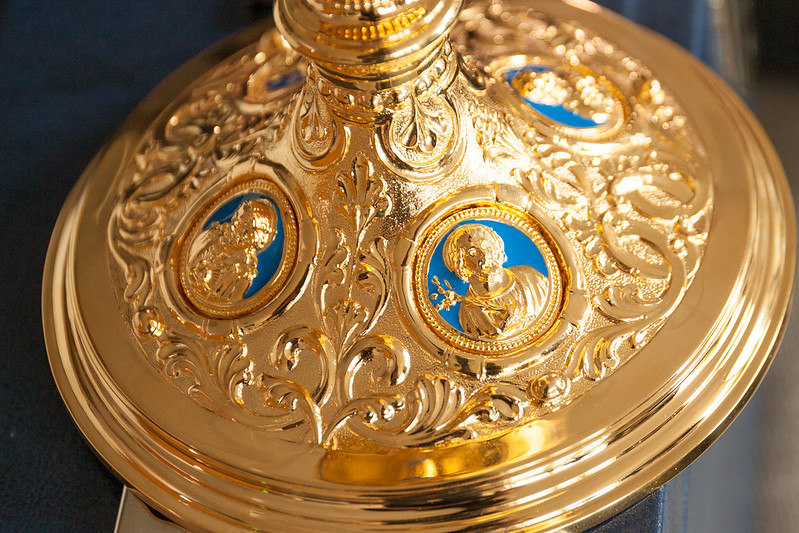
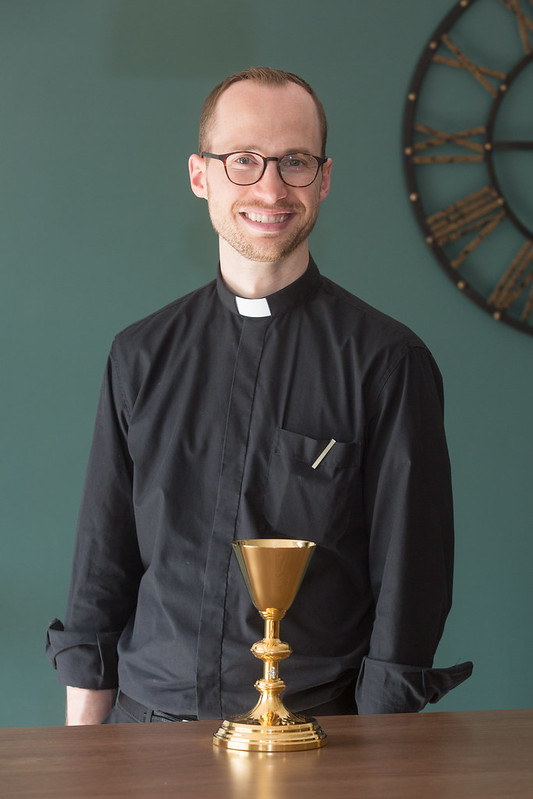
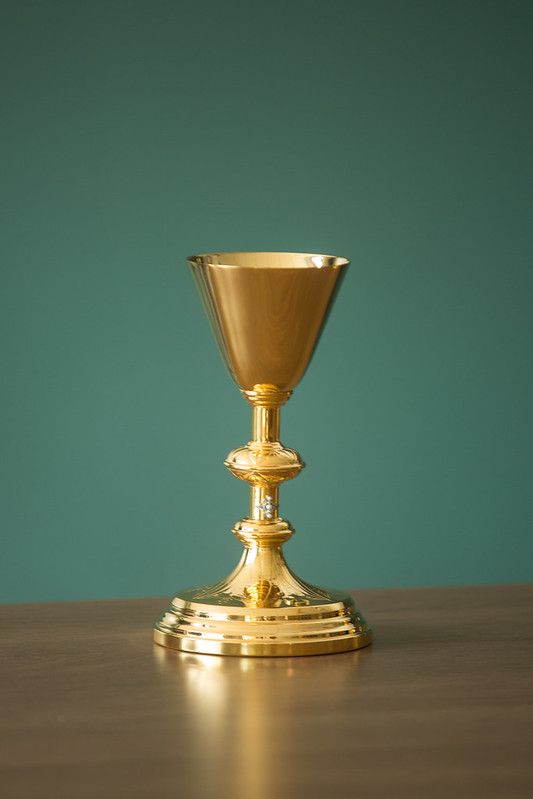
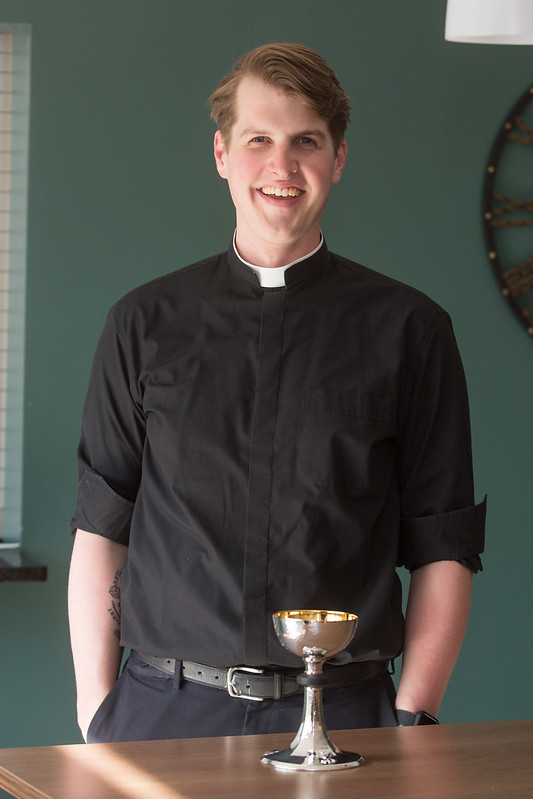
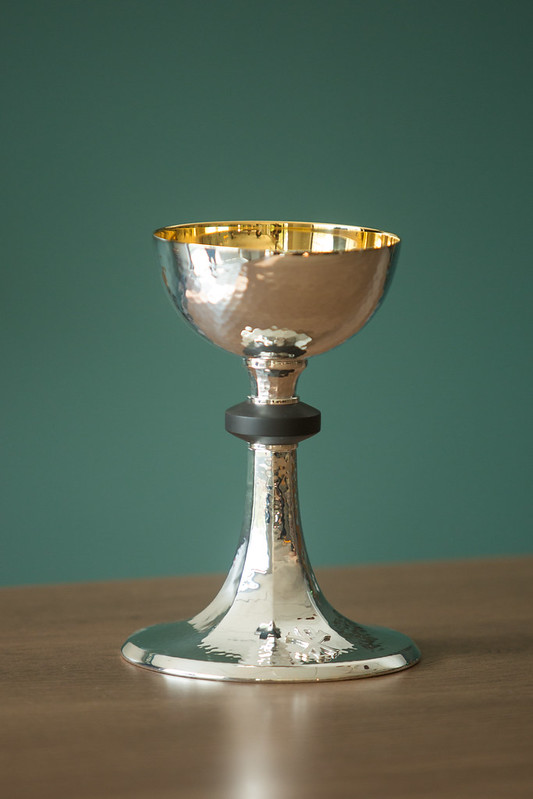
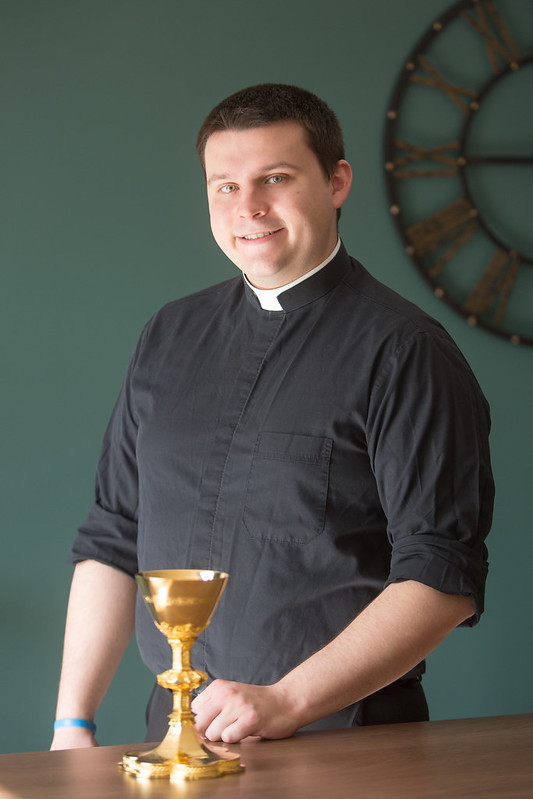
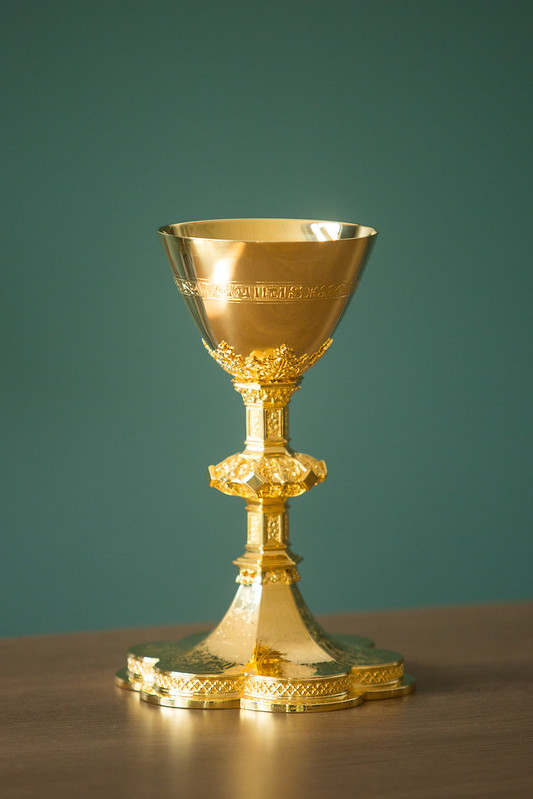
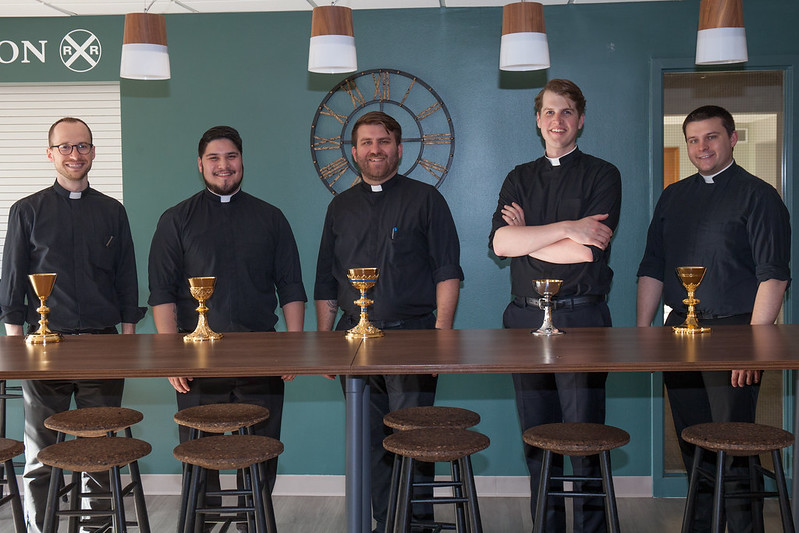
It was the Eucharist that drew fellow transitional deacon Jason Lee to the Catholic Church in the first place.
The son of an immigrant father and a born-and-raised Iowa mother, Lee grew up Methodist. A friend introduced him to Marian devotion, and frequent prayer of the rosary eventually led him to study the doctrine of Christ’s true presence in the Eucharist.
At 18, Lee became Catholic. Less than a decade later, he’s becoming a priest.
“I remember my First Holy Communion,” Lee said. “It was nine years ago, and there was just so much joy that … I wanted to jump up and sort of leap up and receive Jesus in the Eucharist, and shortly I’ll be able to celebrate and hold Jesus, God, literally in my hands as they celebrate Mass.”
Lee’s simple, Gothic-style chalice produced by Spanish silversmith Molina features three medallions on the base: the Sacred Heart of Jesus, St. Joseph with the child Jesus and the Immaculate Heart of Mary. Lee calls the Sacred Heart “the perfect image of the priesthood.” He chose St. Joseph as his patron saint when he was confirmed and received into the Catholic Church – primarily because Christ’s foster father reminded Lee of his own dad, an immigrant from Hong Kong. And Mary’s Immaculate Heart reminds him of the connection with the Blessed Mother that first drew him to Catholicism.
“I definitely needed Mary on my chalice,” Lee said. “Without her, I would not have become Catholic in the first place.”
The idea of priesthood didn’t even occur to Kratt, a cradle Catholic, until high school. The biggest impetus was deeper belief in the Eucharist, augmented during a Catholic youth camp experience the summer before his sophomore year.
While helping lead the camp, Kratt spent hours in Adoration each day with several fellow high school believers.
“I just kind of went into the deep end right away,” Kratt said. “That continually morphed into ‘I want to actually bring the Eucharist to others.’”
A weekly 3 a.m. Holy Hour at St. Hubert in Chanhassen, Minnesota, was instrumental during the early part of Etzel’s priestly discernment process, he said.
Just him and Christ, alone in the silence.
“Those very quiet, dark hours of the night are a special time to pray,” Etzel said.
Today, men at The Saint Paul Seminary begin each day with a 6:30 a.m. Holy Hour in St. Mary’s Chapel on the seminary campus. Daily Mass is at 11:45 a.m., and the red candle next to the tabernacle is always lit signifying consecrated hosts are contained therein.
“It’s central,” said Deacon John Rumpza of the Archdiocese of Saint Paul and Minneapolis. “Our day revolves around the Mass. We have Holy Hour in the morning, it builds up to … Mass in the middle of the day, and then builds down and a lot of guys will go to the chapel before going to bed just to say goodbye to Jesus and pray their night prayer.”
Deacon Jason Lee, Diocese of Des Moines and a convert to CatholicismI remember my First Holy Communion. I wanted to jump up and sort of leap up and receive Jesus in the Eucharist, and shortly I’ll be able to celebrate and hold Jesus, God, literally in my hands as they celebrate Mass.
Rumpza’s chalice once belonged to Father Henri de Lubac, a French Jesuit priest and cardinal considered one of the 20th century’s most influential theologians; French bishops earlier this year voted to open de Lubac’s case for sainthood. Rumpza’s sister lives in France and befriended one of de Lubac’s close friends, who gave her the chalice to pass along to her brother.
Rumpza took a similarly winding journey to the priesthood. After college, he worked a couple of secular jobs but “wasn’t comfortable there,” he said. “I didn’t know where I was supposed to be. But I knew it wasn’t there.”
While working in San Diego, Rumpza was part of a large corporate layoff. He moved back to his parents’ home in Minnesota and, one night in Adoration, asked God what He wanted Rumpza to do with his life.
“I had the most powerful experience I had ever had before,” Rumpza said. “He said, right into the core of my being, ‘Come be a priest for me.’ Like He said those words. And I felt those words, and I heard those words, in Adoration. And at the same time, I was filled with a joy and a peace I had never experienced before; it was overwhelming.”
It’s why Rumpza is quick to point out that while the stories behind his chalice and those of his fellow newly-ordained priests are significant, they pale in comparison to the gravity of what – or rather, Who – is present in these sacred cups each time Mass is celebrated.
“What’s in the chalice is love itself, is mercy itself, is the wonder who is God Himself given for us, given to us,” Rumpza said, holding his chalice in his hands three weeks before his ordination. “I’m just overwhelmed that through these hands in this chalice, the Lord of the universe will be made present.”
Editor's note: A version of this story originally ran on The Saint Paul Seminary website. The Saint Paul Seminary is located at the University of St. Thomas.
